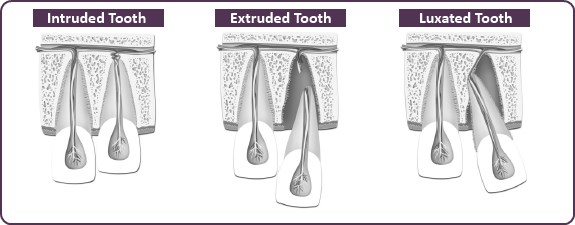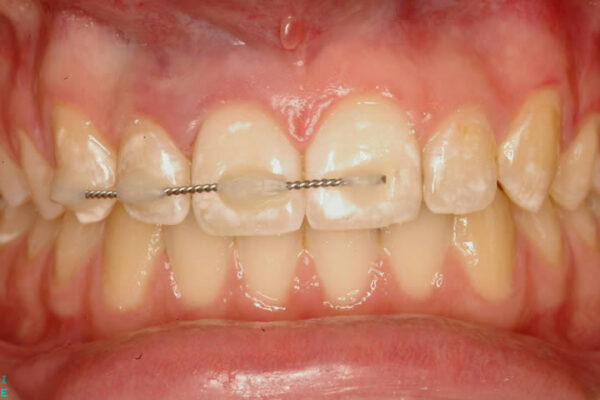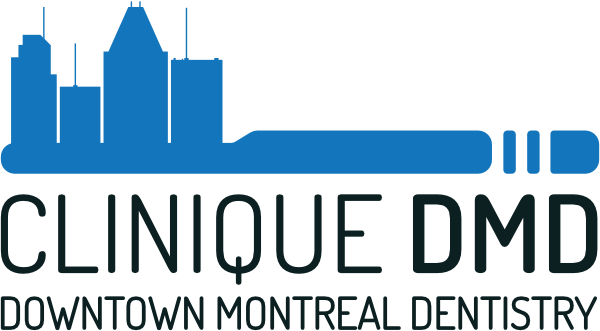A dental accident or trauma involving a front tooth can be a stressful thing to happen to anyone. These types of injuries can take on many forms and are surprisingly common. Some studies suggest that up to 1/3 of adults and children will have an incident in their lifetime. In this article we will discuss some of the more common types of traumas that we see and how to best manage them. It cannot be overstated that in all cases, seeing a dentist for an assessment as soon as possible will increase the success rate of any treatment and help preserve your tooth.
We will discuss tooth fractures, luxations (movements of the tooth out of position but still in the mouth) and avulsions (tooth completely knocked out of the mouth). We can further differentiate into primary teeth and adult teeth.
Primary (baby) teeth
The treatment options for primary teeth that are fractured will depend on the extent of the fracture. Small chips or breaks in the enamel are often just smoothed off, and any discomfort in the tooth usually will go away in a couple of days. Any deeper fractures may require a filling to cover up the sensitive inner part of the tooth, if it is exposed. Sometimes a deep fracture may even require a root canal on the baby tooth, particularly if you notice that the tooth itself is bleeding from the broken part. However, in a lot of cases, it is often a better choice to extract the tooth at that stage. Usually your child won’t miss it, and the adult tooth will eventually take its place.
A luxation is when a tooth has moved out of its original position. It can be pushed deeper into the gums, to the left or right, or even further out of the gums. In most cases, no treatment is required other than monitoring the situation. The tooth may correct itself on its own, but even if it doesn’t it should still fall out when the adult tooth is ready to come in. The exception is when it is pushed deeper into the gums, or intruded, in a manner that puts the adult tooth at risk. In this case, we would extract the luxated tooth.
An avulsion is when a tooth has been completely knocked out of the socket. For primary teeth is it not recommended to try and put it back into place. Of course you must be sure that it is in fact a baby tooth and not an adult one, so be sure to see the dentist quickly after any accident.

A graphic representation of some of the different kinds of effects a trauma can have on a tooth
Permanent teeth
With permanent teeth, the treatments are a bit different and sometimes depend on the age of the patient. Since permanent teeth are not easily replaced, the goal is to try and preserve them as much as possible. In the case of a fractured tooth, that may mean a filling, it may mean a crown, and it may sometimes mean a root canal and post as well. It is up to the dentist to assess the specific situation and then for both of you to come to a decision on the best course of action for you. Sometimes the tooth may not be salvageable, and then extraction and replacement may enter into the discussion.
For a luxated permanent tooth, the ideal treatment is to try and reposition the tooth back into its usual position. This is best done as soon as possible after the accident. Usually a splint wire is then attached to the front teeth to hold the injured one in position for 1 to 2 weeks. After the wire is removed, care must still be taken as the tooth may be tender for a number of days. An exception to this treatment is if the tooth is intruded, pushed into the gums, a significant amount. In these cases it is often required to reposition the tooth surgically or orthodontically.
An avulsion of a permanent tooth requires fast action. The chance of being able to re-implant the tooth decrease substantially after the first hour. Should you be involved in an accident and have a tooth knocked out, try your best to clean off the tooth gently, touching only the crown part of the tooth, not the root. If possible, try and put the tooth back into its place yourself. If that is not possible, you can place it in a cup of milk, or in your mouth, and in either case go to the dentist immediately. There a splint will be made to hold the tooth in place until it heals.

An example of a splint wire holding a tooth in position
It is important to realize that with avulsions, even if treatment is carried out quickly and correctly, the long term prognosis of the tooth is guarded. It may discolour, or need a root canal, or be lost eventually and need to be replaced. Unfortunately it is one of the most serious dental injuries and does not always have a predictable outcome.
If you have had a dental accident, please call our office immediately for assistance.
For more information on this topic, you can link to the following resources:

